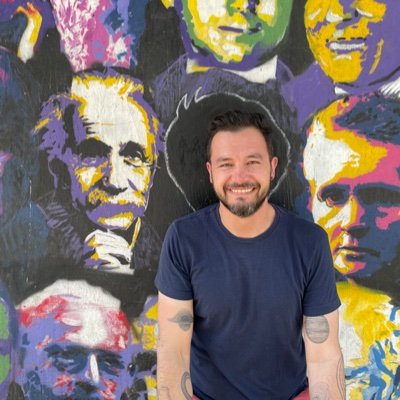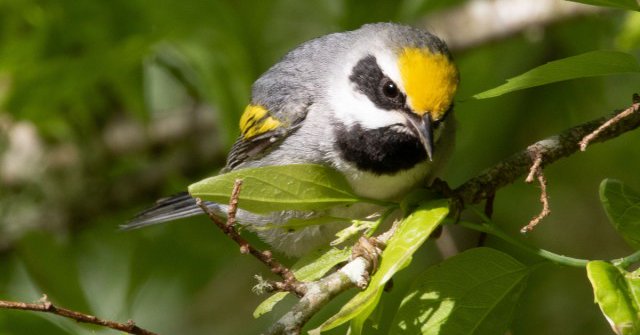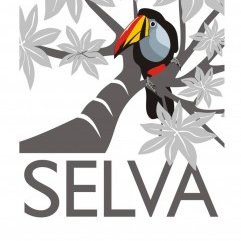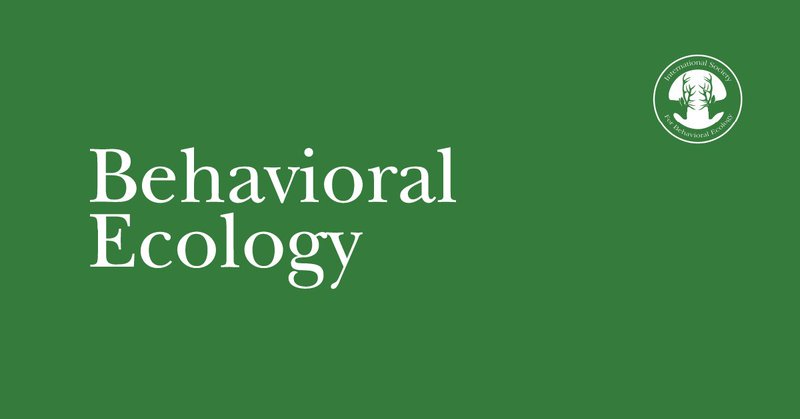
Esteban Botero D.
@EBoteroD
Followers
411
Following
2K
Media
110
Statuses
1K
Behavioral & spatial ecologist. Founding member & Director of Conservation Science at @selvaorgco. Research Associate at @SMBC. Guest Scientist at @MPIforBI.
Joined August 2019
Mirroring X content in #BlueskySocial as well! ¡Posteando el mismo contenido en BlueSky también!
0
0
0
Your daily Avian Hybrids story! How strong is reproductive isolation between Golden-winged and Blue-winged warbler? https://t.co/iYfpllt1rz
#ornithology
avianhybrids.wordpress.com
A summary of a recent debate in the journal Ecology and Evolution.
0
1
4
Jueves 11 de diciembre · 11:15 a.m. En el Auditorio 2: Grallaricula sp. nov. — VIII Congreso Colombiano de Ornitología. Charla: “Estado poblacional de nueve especies de aves endémicas de la Sierra Nevada de Santa Marta”. ¡Nos se pierdan nuestras charlas de hoy!
0
3
14
Hoy · 17:15–17:30 En el Auditorio 1: Cyanocorax yncas — Simposio Aves en Paisajes Productivos. Charla: “Puentes para la conservación: estrategia de sensibilización y extensión sobre biodiversidad en paisajes cafeteros”.
0
2
7
Hoy · 16:45–17:00 En el Auditorio 1: Cyanocorax yncas — Simposio Aves en Paisajes Productivos. Charla: “Aplicación de índices de diversidad funcional para la selección de especies vegetales en sistemas agroforestales de café”. ¡Los esperamos!
0
2
9
¡Nos vemos esta tarde para hablar de aves, bosques y café!
Jueves 11 de diciembre · 15:20–15:35 En el Auditorio 1: Cyanocorax yncas — Simposio Aves en Paisajes Productivos. “¡Más bosque alrededor, más aves en cafetales! La cobertura boscosa modula la presencia de distintos gremios de aves en paisajes cafeteros de los Andes colombianos”
0
0
0
¿Qué determina que hayan cópulas y crías extra-pareja en un furnárido socialmente monógamo? Nos vemos hoy a las 10:25 en el Auditorio 1 de #Univalle en el #CCO2025 para indagar un poco acerca de la vida sexual del #Rayadito
@selvaorgco @OrnitologiaCol
0
0
1
Así transcurrió nuestro curso inicial en el marco del congreso #CCO2025: una jornada de intercambio académico y construcción colectiva de conocimiento. Les compartimos algunos momentos destacados.
0
2
6
Nuestro equipo de investigación presentará avances destacados en diversas líneas de estudio. Aquí compartimos algunas de las ponencias que harán parte del congreso #CCO2025. ¡Te invitamos a revisarlas y a agendarte para esta semana de intercambio científico!
0
2
6
Ecología y conservación de aves en paisajes productivos: ciencia aplicada para entender la biodiversidad y diseñar estrategias sostenibles a escala. @selvaorgco 🕊️🌱 #CCO2025 #Biodiversidad #PaisajesProductivos
0
3
3
Las aves revelan sus estrategias más íntimas en nuestro simposio del CCO2025 sobre biología reproductiva. Nidos, huevos, cuidado parental, estacionalidad y nuevas tecnologías para estudiar procesos fundamentales. 🕊️ Ciencia, historia natural y métodos innovadores. #CCO2025
0
3
3
Egg Characteristics of Female Common Terns Are Repeatable, and Vary With Maternal Age and Laying Order - Bichet - 2025 - Ecology and Evolution - Wiley Online Library https://t.co/uVjCFNPqIh
0
0
1
Duration of nest-building in passerine birds: the roles of latitude, nest size, and nest type 🐦⬛ https://t.co/m8SFq4CBj8
academic.oup.com
Why do birds build nests at different speeds? Nest building is crucial for reproductive success, but the drivers of its varying duration across species wer
0
0
2
Bird Friendly coffee farms save birds, and those birds help farms: A study in Guatemala found that birds act as natural pest control and can reduce herbivorous insect presence on coffee from 64 to 80%. Excluding birds resulted in greater insect damage to coffee leaves.
0
1
5
🐇 "Despite century-long research, demographic mechanisms underlying snowshoe hare population cycles have remained elusive" New Research: Demographic mechanisms of snowshoe hare population cycles in Yukon, Canada ➡️ https://t.co/ikrXkfAxQc
0
13
31
🌿 The threatened Golden-winged Warbler thrives in forests & shade coffee farms with dense cover and hanging leaves for foraging. Studies show females are often found outside farms, while males are more likely inside them. 🐦☕ #BirdFriendlyCoffee #GoldenWingedWarbler #Warbler
0
3
9
🐦 New research - Community composition coupled with habitat fragmentation drives acoustic divergence in bird assemblages 📖 Read the full paper here ➡️ https://t.co/OZsTug1FXp
0
2
23
¡Aquí está #ELDreamTeam! Una combinación de árboles nativos que maximiza la diversidad de aves y sus funciones ecológicas. Esta estrategia costo-eficiente puede integrarse en iniciativas de reforestación. Aquí el caso de los paisajes cafeteros en Cundinamarca. #DrinkBirdFriendly
0
5
13
En septiembre 2025, la investigadora colombiana Ana Díaz, junto con colega Greg Mitchell @ECCCSciTech, marcaron 30 mariposas monarca en Long Point, Canadá, con transmisores minusculos llamados Blu+ de @CellTrackTech. Los resultados impulsaron una colaboración sin precendentes...
1
5
11







